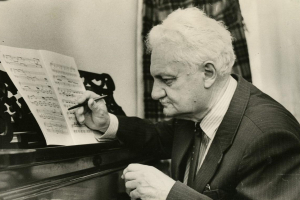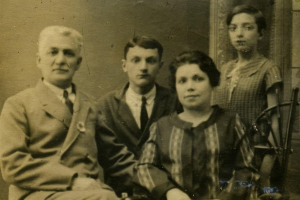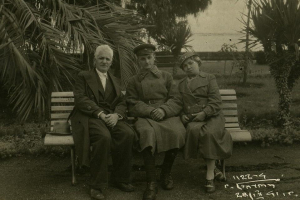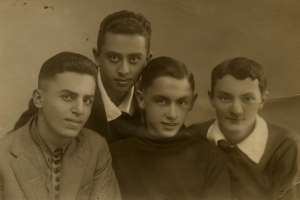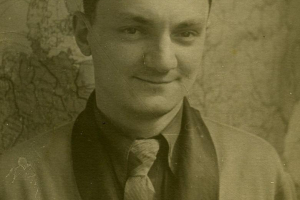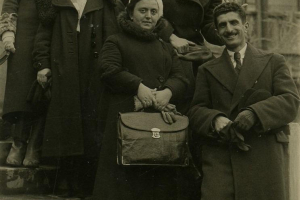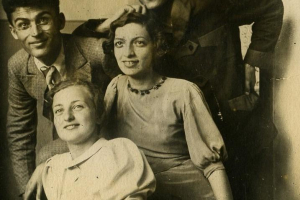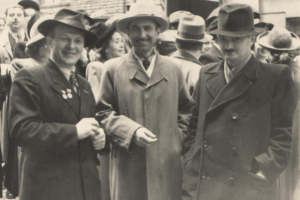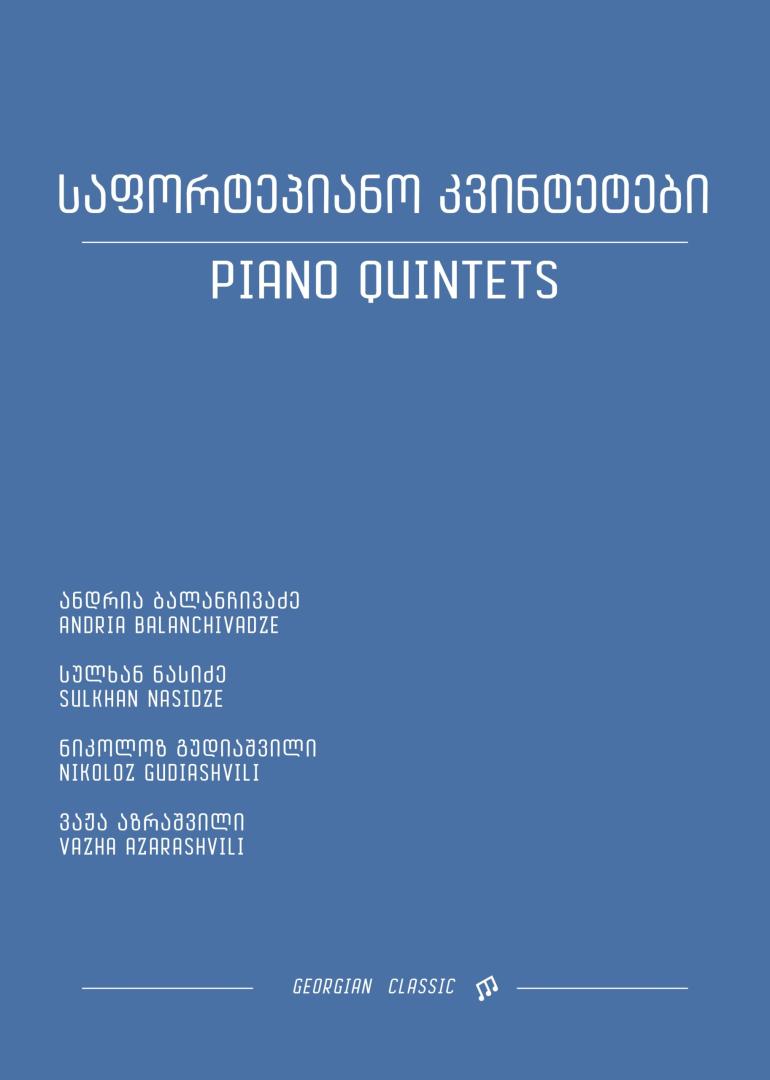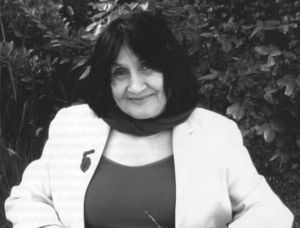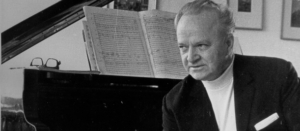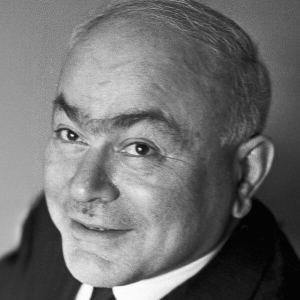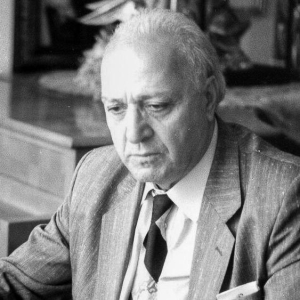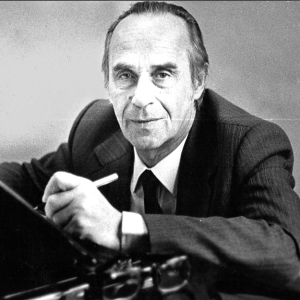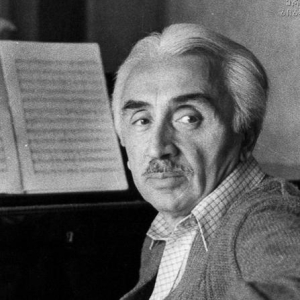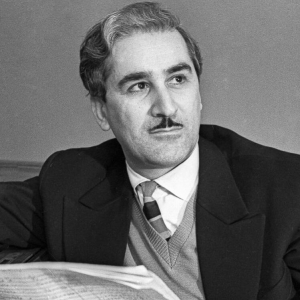Nikoloz
Gudiashvili
Nikoloz Gudiashvili
(1913 – 1998)
Nikoloz Gudiashvili – Georgian composer, scientist. Nikoloz Gudiashvili worked in the field of theater, symphonic chamber–recording, chamber–vocal, choral and pop music. His piano quintet is the first and one of the best examples of this genre in Georgian music. Honored Worker of Georgian Art (1961), People’s Artist of Georgia (1990).
Date of birth – May 19, 1913
Place of birth – Tbilisi, Georgia
Date of death – April 7, 1998
Place of death – Tbilisi, Georgia
He is buried in Didube Pantheon of Writers and Public Figures – Tbilisi
BIOGRAPHICAL DATA
1937 – Graduated from the Tbilisi State Conservatory named after Vano Sarajishvili, majoring in composition (class of S. Barkhudariani);
1941 – Graduated from Vano Sarajishvili Tbilisi State Conservatory (supervised by P. Ryazanov);
1937 – 1947 – Teacher of Tbilisi music schools;
1938 – 1941 – Teacher of Vano Sarajishvili Tbilisi State Conservatory;
1941 – 1943 – Participated in the Great Patriotic War;
Since 1965 – Docent of Vano Sarajishvili Tbilisi State Conservatory (1965), professor (1981)
He is the author of the book – “Polyphony: strict style” – Tbilisi, “Ganatleba” publishing house, 1986
AWARDS AND RECOGNITION
1939 – Member of the Union of Composers of the USSR
1961 – Honored Art Worker of Georgia
1990 – People’s Artist of Georgia
Nikoloz Gudiashvili
(1913 – 1998)
SELECTED WORKS
MUSIC FOR THE THEATER
1944 – “Eliso” – Opera in 4 Acts – (libretto – N. Dadiani)
1960 – “Ketevan Tsamebuli” – Opera in 4 Acts – (libretto – V. Gabiskiria)
1971 – “Bloody Table” – Opera in One Act – (libretto – O. Chelidze)
1971 – “Revenge” – Opera in 2 Acts – (libretto – O. Chelidze)
1971 – “Viva Iveria” – Opera in One Act – (libretto – O. Chelidze)
1951 – “Mother’s Handkerchief” – Ballet in 4 Acts – (libretto – D. Javrishvili)
1958 – “At the ruins of Narikala” – Ballet in 4 Acts – (libretto – O. Chelidze)
1950 – “Meeting at the country house” – Operetta in 3 Acts – (libretto – I. Gotsiridze, P. Gruzinski)
1951 – “The Gift” – Operetta in 3 Acts – (libretto – I. Gotsiridze, P. Gruzinski)
1954 – “Salkhinebeli” – Musical Comedy in 4 Acts – (libretto – D. Taktakishvili)
1959 – “At dinner” – Operetta in 3 Acts – (libretto – V. Urjumelashvili)
ORCHESTRAL MUSIC
1941 – Symphony No. 1
1949 – Symphony No. 2
1968 – Symphony No. 3 “To the Heroes of Texel”
1980 – Symphony No. 4 “To Friends” – for String Orchestra, Pair of Woodwinds, Trumpet, Horn and Trombone
1949 – Suite for Symphony Orchestra
1963 – Suite for Chamber Orchestra
1950 – “The Solemn Overture”
1941 – Concerto for Piano and Symphonic Orchestra N 1
1946 – Concerto for Piano and Symphonic Orchestra N 2
1948 – Concerto for Piano and Symphonic Orchestra N 3
1961 – Concerto for Piano and Symphonic Orchestra N 4
1980 – Concerto for Piano and Symphonic Orchestra N 5
1955 – Concerto for Violin and Symphonic Orchestra N 1
1961 – Concerto for Violin and Symphonic Orchestra N 2 (for children)
1957 – Concerto for Violin, Cello, Piano and Symphonic Orchestra (Triple Concert)
VOCAL AND VOCAL-INSTRUMENTAL MUSIC
1944 – “Caucasion” – Cantata for Soloists, Chorus and Symphony Orchestra
1982 – “Faith” – Oratorio for Soloists, Chorus and Symphonic Orchestra – (text – P. Gruzinski)
1949 – Vocal Cycle for Voice and Piano – (6 Romances) – (text – A. Pushkin)
1964 – Vocal Cycle for Voice and Piano – (6 Romances) – (text – T. Tabidze)
1965 – Vocal Cycle for Voice and Piano – (10 Romances) – (text – I. Noneshvili)
CHAMBER-INSTRUMENTAL MUSIC
1939 – String Quartet N 1
1953 – String Quartet N 2
1981 – String Quartet N 3
1987 – String Quartet N 4
1987 – String Quartet N 5
1948 – Piano Quintet N 1
1986 – Piano Quintet N 2
1973 – 10 Miniatures for Piano Quintet
1958 – 24 Polyphonic Pieces for Piano
1972 – 24 Preludes and Fugues
1976 – 24 Preludes for Piano
1975 – Suite for Piano N 1
1976 – Suite for Piano N 2
1977 – Poem for Trumpet and Piano
1977 – Children’s Polyphonic Plays On Folk Themes – for Piano
1977 – 4 Children’s Polyphonic Plays – for Piano
AUTHOR OF MANY INSTRUMENTAL PLAYS, SONGS, ROMANCES
SCIENTIFIC PUBLICATIONS
“Polyphony: strict style“– Tbilisi, publishing house “Education“ – 1986
Nikoloz Gudiashvili
(1913 – 1998)
In Georgian professional music, Gudiashvili’s works attract attention due to the exquisite taste, vivid, sequential connections to national roots, fine details, and masterful processing. Nikoloz Gudiashvili’s works include a wide range of styles. The composer worked in almost every musical genre. 5 operas, 2 ballets, 4 operettas, 4 symphonies, 5 piano concerts, 2 violin concertos, choral, vocal, and vocal-instrumental works are among his works. His instrumental performances are especially significant: With five piano concertos and two violin concertos, his triple concerto (for violin, cello, and piano) is a novelty in Georgian music. “Nikoloz Gudiashvili’s place was primarily determined by chamber works,” writes musicologist Dodo Gogua. This is not accidental because he is a true lyricist by nature… His works were created during the most active, dynamic period of Georgian professional music’s development, and are regarded as an essential, organic part of , in historical perspective. Nikoloz Gudiashvili’s biography’s dramatic page is due to his direct involvement in World War II. Pre-war and post- war periods are also considered to significant degree in the composer’s creative work. In his works, this is one of the most difficult periods of the twentieth century. This theme is dedicated to the cantata “Caucasus” (1944), as well as the third symphony “Texel Heroes” (1968), in which the theme of war is linked to artistic dramatization. Nikoloz Gudiashvili’s early works, such as the string quartet N 1 (1939), reveal the author’s creative goals and aspirations. Piano preludes (1939), violin and piano poem (1939, 1946). Sonatina is a miniature cycle that clearly demonstrates the composer’s philosophical principles (1949). Gudiashvili’s work is characterized by the balance of aesthetic and rational factors. Sonatina has established itself as an important example of Georgian professional music, appearing in pianists’ repertoires as well as educational programs. The piano quintet is a generalization of the composer’s worldview and creative method (1948). The author’s national beliefs are expressed in a variety of ways in this piece of music. The folk begins with a dramatic load. – The composer tries to use variety of resources to present his work. As a result, the lyrical and dramatic genres are born. Through improvisational-poetic development, the author achieves this driving force of the work. The importance of the song’s beginning will be felt here, just as it is in Gudiashvili’s other works. The composer’s artistic-species world is created by the primacy of Cantilent melody and showing a variety of musical or vocal expression. (coloristic expression, attitude) The polyphonic thinking of Nikoloz Gudiashvili is remarkable. This was due to his pedagogical activity at the Tbilisi State Conservatory, where he taught polyphony for many years. Polyphony textbook by N. Gudiashvili was also published. A number of his works show a tendency toward polyphonic music, but mostly in pieces. Polyphonyc textbook by N. Gudiashvili was also published. Polyphonic compositions by Gudiashvili reached high level: polyphonic plays and 24 preludes and fugues. This is Georgian music’s first example of this type of cycle. The synthesis of national and European classical polyphony, while taking into account the technology of the twentieth century, was regarded as having special dignity in musicology. This cycle “represents a new understanding of the genre and content of the great polyphonic cycle,” according to musicologist Leila Maruashvili. The importance and vitality of Nikoloz Gudiashvili’s work was underlined at a ceremony of the composer’s 100th anniversary which was held at the Tbilisi State Conservatory.
Musicologist
Tamar Tsulukidze
English Language Translator
Tamar Kharadze



